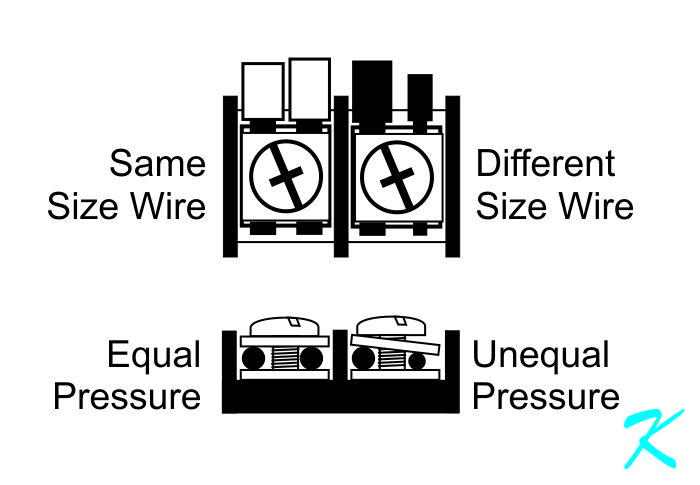Before you examine the horns and strobes for trouble, you need to know a little about the circuit you're looking at.
When the panel is sounding the alarm, the panel is applying "Forward Voltage" on the Notification Appliance Circuit (NAC). Inside each and every horn and strobe is a "Blocking Diode" that allows current from the NAC circuit to run through the horn or strobe, while in alarm.
On the other hand, when the panel is not sounding the alarm, it is "Supervising the Wires" of the circuit. The panel has reversed the voltage on the NAC, and the "Blocking Diode" inside the horns and strobes prevent any current from flowing through the horn or strobe, while not in alerm.
Yes, it would be nice if the panel could supervise the horns and strobes to make sure they are fully functional, but the horns and strobes aren't complicated enough to be able to send any information to the panel. When the panel is supervising the wires of the circuit, the horns and strobes are no better than terminal blocks.
Continuity Check
The panel, when supervising, isn't really checking to see that the horns and strobes work; the panel, when supervising, is checking to make sure all the horns and strobes are connected. It checks to make sure they're connected by running a small current, backwards, through all the wires.
It takes the whole string of red wires, the end of line resistor, and the whole string of black wires to make a complete circuit. The terminal blocks on the horns and strobes are also part of the circuit.
- If a screw terminal on the horn or strobe is loose, the circuit is broken, and the current stops. The panel then shows a trouble
- If a wire breaks anywhere in the building, the circuit is broken, and the current stops. The panel then shows a trouble
- If the end of line resistor doesn't make a good connection, the circuit is broken, and the current stops. The panel then shows a trouble
- If a horn or strobe is unplugged so the wires don't pass on the current, the circuit is broken, and the current stops. The panel then shows a trouble
Not Quite Properly Made Connections
One time, in a church, our company made several trips there for an intermittent trouble on a strobe circuit. It was always fine while we were there, so we couldn't even tell which circuit was in trouble.
Finally, one time while there, the circuit went into trouble for a short while. The best I could do was to determine which circuit had a trouble, and then the trouble cleared.
What I did was to go to all 8 strobes, and tighten down the screws of the circuit. Most of them were very tight when I tried to tighten them, but a few screws could be tightened just a tiny bit. There was no obvious problem, but the troubles on the strobe circuit quit and never returned.
Mismatched Wires

Another common issue I've found is mismatched sizes of wires under the same screw. At your end of line resistor for the NAC circuit, look closely at the wires under the screw terminals. The end of line resistor wire is very thin, while the wire for the NAC circuit is quite fat. If both the thin and fat wires are under the same screw terminal, the thin wire could be building up tarnish.
For the fire alarm installer, there doesn't seem to be a problem. But after a few years, if one of the wires isn't tightened down hard, tarnish builds up on the copper wire and the screw terminal. The tarnish makes for a poor contact, and as the contact is in the process of going totally bad, the contact becomes intermittent. Sometimes it can take many hours to find and fix the intermittently poor contact.
Usually, installing a short wire to match the thicker wire makes a better contact. One end of the added wire goes under the screw plate, and the other end of the added wire is wire-nutted to the end of line resistor.
It's the Wires
- If you have a trouble, it's the wires, not the horns or strobes
- When the alarm isn't sounding, the voltage on the circuit is reversed from the alarm voltage. Don't change the polarity
- Always call the monitoring company before doing anything to the fire alarm system; make sure they are not going to call the fire department if the alarms accidently sound off. It's embarrassing to meet your former coworkers that way
Douglas Krantz


